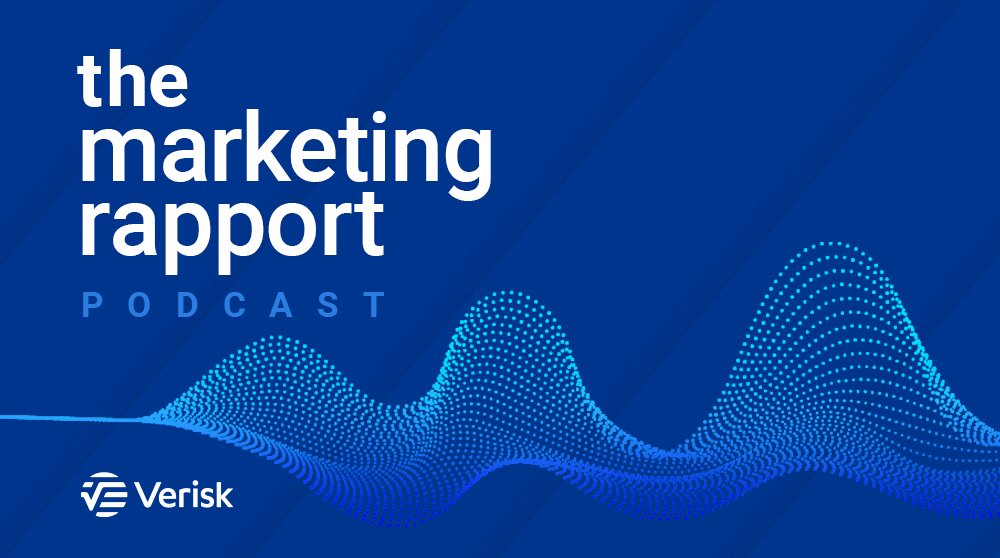Using Data to Improve Your Customer Experience With Ian Dewar
Data-driven marketing is the future. Your customers will tell you everything you need to know about them. You just need to listen.
Living in a data-driven world has changed the way we do everything, but mainly, how we do business and interact with our customers. There’s a considerable amount of customer data available out there; it’s just a matter of putting it to good use. If you want to get close to your customers, you have to learn how to wisely use the information they give you. It’s all about personalization, loyalty, and connection.
In the latest episode of the Identity Revolution podcast, our host Eric Gastevich welcomes Ian Dewar, the Global Director of Consumer Analytics at VF Corporation. VF Corporation is one of the world’s largest apparel, footwear, and accessories companies. Their portfolio consists of large brands like Vans, North Face, and Timberland.
How do such world-renowned brands interact with their customers? How do they drive brand loyalty? And how has the pandemic affected them? Read on or tune in to this episode to find out.
Marketing is about creating unique connections
Ian has an impressive marketing background. He says that one of the biggest lessons he’s learned along the way is that marketing begins with customer connections. To build a strong brand, you need to offer your customers a relevant and meaningful experience. And that’s where data can help.
“Even then, the focus was on how we can create unique experiences that are relevant for each of our customers. […] My goal was to design these athlete experiences and connect our professional athletes to our customers. But it ended up being marketing. The same thing happened with the adventure travel trips. If we create a unique experience, and we encourage people to ride their bikes, and we use something like a race, an event, or a professional athlete to bring people in, it’s not that complicated. The more people ride their bikes, the more likely they are to buy another bike. And so marketing really became this integration of how we can create experiences and introduce them to our customers.”
Using customer segmentation and first-party data to better understand what customers want to do
It all boils down to this: you have to know your clients. And with the arrival of the data era, it is now possible for you to understand your customers’ deepest desires. First-party data and customer segmentation can give you insight into your customers’ lifestyles, behaviors, and goals. You need to use this valuable information to understand your audience better and deepen your connection with them.
Ian explains, “We were doing analysis based on purchase behavior, and we used a kind of simple RFM [recency, frequency, monetary value] to identify our most-likely-to-buy customers for catalog distribution. We used activity behavior, what events they attended, and what they told us they were interested in to create specific digital content and deliver segmented emails. And both of those allowed us to start this process of personalization by increasing the relevance of our messaging.”
More digital engagement during COVID
Everyone has been touched by the COVID outbreak, one way or another. So, how has it impacted consumer behavior?
Ian says that customers are more knowledgeable than before. They come into the store or to the website already knowing what they want to purchase. They also have a clearer understanding of what’s available to them. So, naturally, their purchase behavior is quite different.
Ian talks about what this means for VF Corporation. ”One of the things that I’m seeing and that our stores are telling us is that customers are less likely to be window shopping and more likely to be deliberately shopping, and that’s all because we’re providing them with more information upfront. So when you say, ‘What’s the right digital technology? What’s the right MarTech?’ It’s an extension of what we had before. But the role of personalization and access to information becomes that much more important because, for most of our VF brands, the shopping journey starts digitally almost every time”
Personalization is ‘aided discovery.’
The ultimate goal of data-driven marketing is to provide relevant and personalized customer experiences. So, how do you use customer information to personalize their shopping journey?
First of all, it’s essential to understand what personalization is all about. Ian refers to it as ‘aided discovery.’ It’s all about getting to know your customers and helping them discover products they can use or need in their life. Ian shares an example, “One yellow boot can have multiple uses, and it’s unrealistic for us to expect that everyone who buys a yellow boot is working on their house, going out in the city and walking to work, owns a cabin, and likes chopping their own firewood. But if they do any of those things, we’ve got a good product for them. […]
And that’s where real-life behavior is super important. And third-party data that helps us understand real-life behavior is super important to help us build these customer profiles so our personalization spectrum gets closer to what the customer really wants to do in their life and how we can support that.”
Personalization is about listening to what the data is telling you
In this day and age, customers expect companies to know their preferences and interests. They also want their favorite brands to engage with them as individuals and not come off as too sales-y. So, how do you approach your customers the right way?
Well, the trick is to learn how to leverage customer data and create memorable experiences. Then, again, personalization offers tremendous benefits — from building brand loyalty to generating more revenue.
“The core of personalization and customer expectation is that if they tell us something, we will use it. We’ve made it clear that we acknowledge that our customers have different interests. The North Face customer doesn’t have to be a skier, a camper, or a runner. The Vans customer doesn’t have to surf, skate, or BMX.”
Driving brand loyalty with data
Building brand loyalty is the best way to use first-party data and customer segmentation. Therefore, a strong brand presence should be the number one priority for all companies.
When it comes to huge brands like North Face and Vans, personalization is key. Not only do they know their customers well, but they also care about them. According to Ian, these brands put their customers’ interests first. As a result, they tailor brand messaging according to their customers’ wants and needs.
“What we do to build loyalty is continue to show our customers the products and stories that excite them. One of the big things we learned about loyalty is that for brands like Vans, North Face, and Timberland that don’t have really high frequency, the reminder of relevance is an important part of a loyalty program.”
Data privacy is crucial
Trust is a huge aspect of brand loyalty. If you want your customer’s trust, you have to earn it. That’s why we need to prioritize the privacy of personal data and information.
While your main goal should be to create enjoyable customer experiences, you should ask yourself how much of their data you really need. Privacy is certainly a growing concern for customers, so make sure you’re completely transparent about how you use their data.
“Data privacy is very important at VF. It always has been. In fact, part of the impetus for us creating VIP rewards — a loyalty program for the North Face — 10 years ago, was that our store team and our executive team felt uncomfortable asking people for email addresses at the cash register. They said, ‘Hey, we know we can legally do this, but there’s no real exchange of value. If we’re going to continue to engage with our customers in the stores, we should have a program that allows us to do that.’ So, we were focused on consumer privacy and this exchange of value even before we were forced to focus on them.”
Your customer data is truly a source of power; use it to create amazing digital experiences.
Note: This is based on an episode of Identity Revolution, Infutor’s legacy podcast featuring data-driven experts discussing all things marketing, analytics, and identity. We take a deep dive into industry trends, strategies, and the future of data technology.









 Your Privacy Choices for Platform Services | Data Services
Your Privacy Choices for Platform Services | Data Services